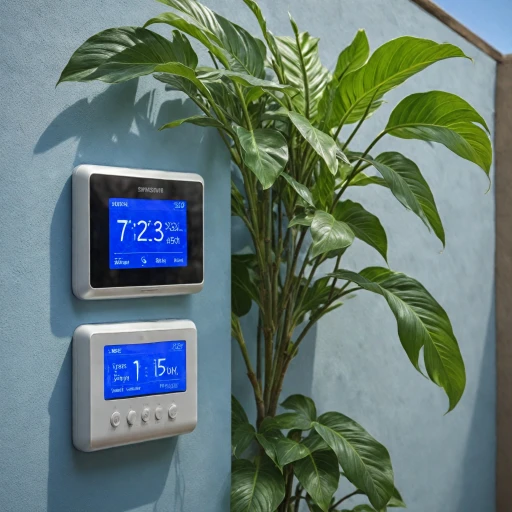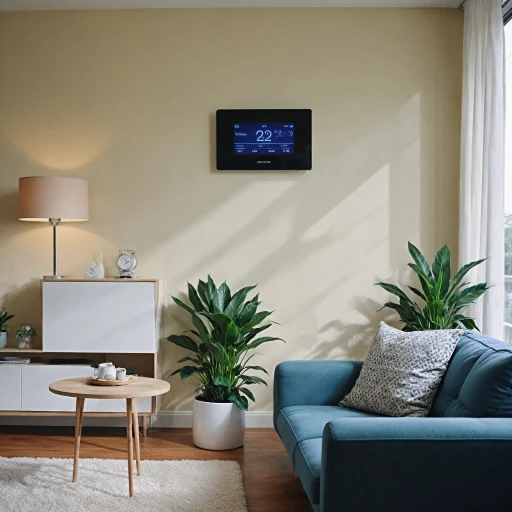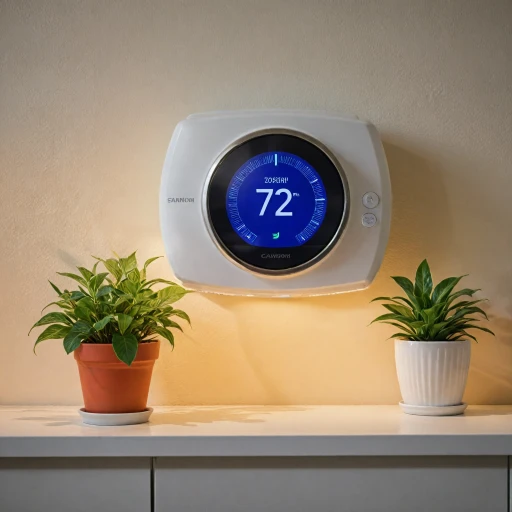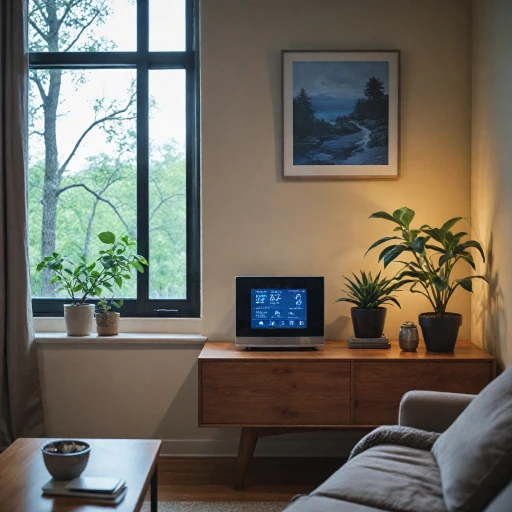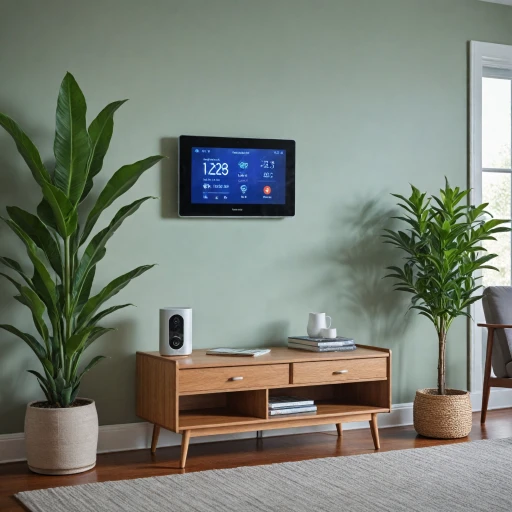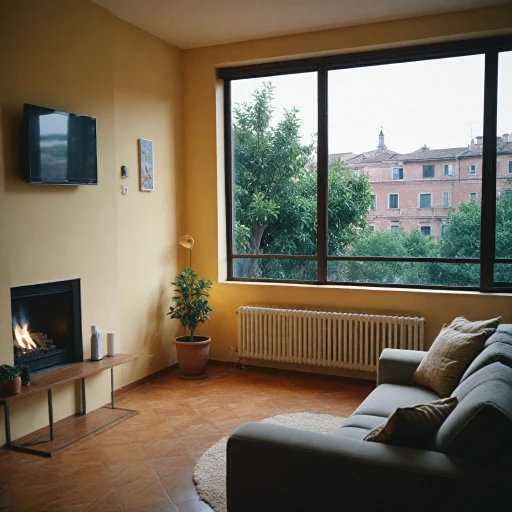Understanding the Daikin Thermostat
Getting to Know Daikin's Smart Approach
In the modern world of smart homes, Daikin thermostats offer a sophisticated way to manage your indoor climate efficiently. They provide a blend of advanced features like touchscreen interfaces and wireless capabilities designed to enhance comfort seamlessly in both residential and commercial settings.
Daikin's thermostats are not merely about adjusting temperature; they encompass the full spectrum of heating and cooling controls. The integration of smart technology allows users to exert nuanced control over their HVAC systems, whether at home or in office environments. This level of control can significantly improve indoor air quality and optimize energy usage.
Among the various models available, Daikin's thermostats offer a range that suits different needs. From wired to sophisticated wireless remote solutions, these thermostats embody full-color displays and cloud-based services that cater to modern living. The focus is on creating a holistic climate control environment that communicates effectively within your existing systems.
As you explore the Daikin smart thermostat range, you'll discover how these devices can offer full communication capabilities, ensuring seamless compatibility with other technologies in your space. From improving everyday comfort to potentially lowering energy bills, they represent a significant advancement in air quality management.
Coming up, we'll delve deeper into how smart technology enhances climate control, how it drives energy efficiency, and the user experiences offered by these innovative products and services.
The Role of Smart Technology in Climate Control
Integrating Smart Technology in Climate Management
Smart technology has significantly transformed the way we manage indoor climates, with Daikin thermostats leading the charge. Equipped with advanced wireless capabilities, these thermostats offer precise control over every facet of your HVAC systems. They stand out from traditional models by providing high-quality performance both in residential and commercial settings.
An essential feature of the Daikin thermostat is its state-of-the-art touchscreen interface. This full-color display allows users to intuitively learn and manage their heating and cooling systems. With this technology, the comfort of maintaining optimal indoor air quality is literally at your fingertips.
Beyond the standard functionalities, Daikin thermostats offer full communications with home systems, making them compatible with a range of other smart home devices. The ability to seamlessly connect with your existing systems ensures that your indoor environment is as comfortable and energy-efficient as possible.
One of the significant advantages of adopting smart technology in climate control is the potential for remote access. Daikin supports controlling your home's climate even when you're away, through devices such as smartphones or tablets. The wireless remote feature further amplifies the ease of managing your climate settings, regardless of your physical location.
Daikin's commitment to innovation in smart thermostat technology doesn't stop at mere connectivity. These devices often integrate with cloud services, allowing for ongoing updates and improvements, enhancing the customer experience by keeping them at the forefront of technological advancements in climate control.
Energy Efficiency and Cost Savings
Maximizing Efficiency for Cost-Effective Comfort
In today's energy-conscious world, optimizing energy use isn't just an environmental duty; it's a smart financial move. Daikin thermostats, with their cutting-edge smart technology, promise to revolutionize the way we manage our indoor climates efficiently. Daikin's smart thermostat models are designed to seamlessly blend into both residential and commercial settings, providing unparalleled control over HVAC systems. Whether you're managing the heating and cooling of a single room with the Daikin ductless system or overseeing a complex configuration in a commercial building, these thermostats fulfill diverse needs. Their ability to adapt and learn from routines plays a crucial role in enhancing energy efficiency. The implementation of this technology results in substantial cost savings while ensuring maximum indoor air quality. Smart thermostats can process data and respond to various factors, such as real-time air quality and occupancy, adjusting the temperature setting accordingly. Within the framework of Daikin's cloud services, users can expect enhanced convenience, as they gain access to full communications and control from virtually anywhere. Moreover, these thermostats offer features like wireless remote access and intuitive full-color touchscreens that simplify user interaction. This integration of technology not only supports recipients in achieving their desired comfort levels with minimal energy wastage, but also significantly reduces operational costs over time. Implementing these advanced systems can lead to optimized HVAC systems, with the thermostat offering full and efficient control over the residential and commercial climate settings. Curious about how to navigate settings like these in other models? You can explore detailed guidance in this comprehensive user manual for insights.Integration with Home Automation Systems
Seamlessly Aligning with Your Smart Home Ecosystem
In today's connected world, integration with existing home automation systems is paramount for achieving a streamlined and efficient living environment. Daikin thermostats have been designed with compatibility in mind, facilitating a seamless connection to various smart home platforms. This allows for effortless control of your indoor air comfort through numerous devices. By offering a range of models that include both wired and wireless controls, Daikin ensures versatility in meeting the varied needs of residential and commercial spaces. Their wireless remote capabilities give users the flexibility to adjust settings from virtually anywhere, contributing to the convenience that modern life demands. Moreover, these thermostats come equipped with advanced communications technology, enabling full communications with cloud services and other smart systems. For instance, Daikin smart thermostats can integrate with HVAC systems, allowing residents to manage heating and cooling with precision, optimizing both energy use and indoor air quality. The incorporation of a full color touchscreen enhances user interaction, making it simple to navigate through the thermostat settings. This intuitive control system not only provides immediate visual feedback but also enhances the residential and commercial experience by offering a user-friendly interface that anyone can learn to use with ease. For those considering an investment in Daikin’s extensive line of products and services, rest assured that their thermostats offer full compatibility with various automation systems, facilitating a smarter, more cohesive living space.User Experience and Customization
Maximizing the User Experience with Customization
Daikin thermostats are lauded for their ability to blend advanced technology with user-friendly features, transforming the way residential or commercial spaces manage their indoor climate. The integration of smart technology into these thermostats doesn't just simplify control over HVAC systems; it elevates the user's overall experience. With Daikin's full color touchscreen interface, users can easily navigate through options and settings, making adjustments as per their precise requirements. This ensures that the transition between heating and cooling is intuitive and seamless, a feature that becomes invaluable in environments with fluctuating temperatures. One of the standout features of Daikin smart thermostats is their compatibility with wireless remote systems. This allows for effortless control from almost anywhere within the premises. By integrating wireless capability, users can even manage settings remotely, ensuring comfort the moment they step into the room. Commercial applications of these systems highlight their flexibility, where building managers can access and adjust air quality settings without being physically present. Beyond basic functionality, the customization possibilities with Daikin thermostats go a step further. Users can program schedules that fit their daily routines, maximizing energy efficiency while ensuring comfort. Whether it is adjusting the HVAC systems in the morning or fine-tuning the indoor air quality before bedtime, Daikin products services ensure full communications and synchronization with the user's lifestyle. Daikin’s open communication protocols mean these thermostats not only learn from user preferences but are also compatible with a range of different IoT devices. As such, they offer full integration with existing home automation systems, making them a versatile choice for those who wish to create a smart residential environment. As smart technology continues to evolve, so too does the capability of Daikin products, constantly coming up to meet the needs of the modern user.Addressing Common Concerns and Challenges
Common Challenges with Daikin Thermostats
When integrating a Daikin thermostat into your home or commercial space, several common concerns might arise. Understanding these challenges can help you make the most of your smart thermostat experience.
Compatibility and Integration Issues
One of the primary concerns users face is ensuring compatibility with existing HVAC systems. Daikin thermostats are designed to work seamlessly with Daikin HVAC systems, but if you have a different setup, it’s crucial to verify compatibility. The thermostat's ability to integrate with home automation systems can also vary, so checking compatibility with your current systems is essential.
Connectivity and Control
Wireless connectivity is a significant advantage of smart thermostats, but it can also present challenges. Ensuring a stable wireless connection is vital for remote control and cloud services. If your thermostat frequently loses connection, it might be worth exploring network enhancements or checking for firmware updates that improve connectivity.
User Interface and Learning Curve
While Daikin thermostats offer full color touchscreen interfaces, some users may find the learning curve steep. The transition from traditional to smart thermostats involves understanding new features and controls. Spending time with the user manual and online resources can aid in this transition, ensuring you utilize all the thermostat's capabilities effectively.
Energy Efficiency and Cost Concerns
Although smart thermostats like Daikin's are designed to enhance energy efficiency, users may initially notice increased energy usage as the system learns your preferences. Over time, the system will optimize heating and cooling patterns, leading to cost savings. Patience during this learning phase is key to reaping long-term benefits.
Addressing Indoor Air Quality
Another concern is maintaining indoor air quality. Daikin thermostats offer features that can help monitor and control air quality, but it’s essential to regularly check and maintain your HVAC systems to ensure optimal performance. Regular maintenance can prevent issues that might affect air quality, ensuring a healthier indoor environment.
By addressing these common challenges, you can enhance your experience with Daikin thermostats, ensuring a more comfortable and efficient living or working environment.

